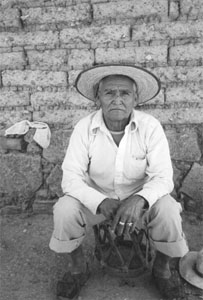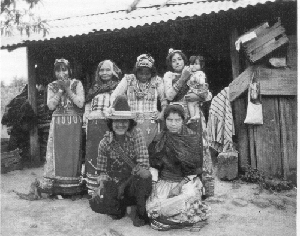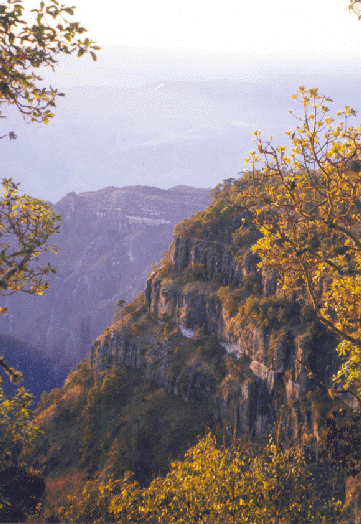The Cora

The Cora Indians have lived in the deep canyons and high plateaux of the Sierra del Nayar since prehispanic times. After the Spanish conquest of the Aztecs, the Cora defended their independent chiefdom for another 200 years: they were the last native group in Mexico to submit to the Spanish crown, in 1722. Their struggle to preserve their autonomy led them to participate in many rebellions over the years, and Catholic evangelization never advanced very far.

Even today, most Cora continue to live on small "ranchos", or family homesteads, scattered throughout the Sierra. Their relative isolation has allowed them to maintain many ancient traditions and techniques that now survive in only a few places. Their daily lifestyle is simple and self-reliant, based on a combination of farming, herding, and foraging which encompasses several distinct ecological zones. The Coras� animistic religion is based on natural deities such as the sun, moon, earth, and stars, and revolves around the annual maize cycle. Shamanism, ritual pilgrimages, and ancestor worship form an intimate connection between humans, nature, and the divine that crosses space and time.
Cora Festivals

Each of these trips is timed to coincide with a traditional Cora religious festival. Cora communities maintain a busy ceremonial cycle, performing about one major festival per month throughout the dry season. The main purpose of these rituals is to procure rains, good crops, and the protection and well-being of the community with the ancestors and gods. The fiestas also reaffirm the Cora identity and social order as they attract people from all over the mountains to socialize and celebrate. The festivals represent a fascinating mix of colonial-era Catholic symbols and ancient Mesoamerican rites. The colorful ceremonies, processions, and dancing usually go on for several days, and provide a unique window into Native American culture and cosmovision. Lively music and a fine sense for the theatrical help make Cora festivals a memorable experience.
The Sierra

The Sierra del Nayar forms part of the Sierra Madre Occidental, the rugged mountain range which parallels the Pacific coast of Northwest Mexico. Its most outstanding feature are the huge barrancas, or canyons, formed over millions of years of erosion. Some of these canyons are well over a mile deep, and the abrupt changes in altitude allow for a range of microclimates from pine forest in the high country to semi-desert matorral on the canyon bottoms. Wildlife includes a mix of North- and Central American fauna such as deer, wild boar and turkey, puma, coati, caiman, and many tropical bird species.
For the Cora the entire Sierra is a sacred, mythic, and living landscape. The dramatic cliffs and rock formations are the people�s own deceased ancestors who have turned to stone in previous ages, the springs and caves that dot the mountains are abodes of different gods and doorways to supernatural realms, and many plants and animals are considered to hold magical powers.